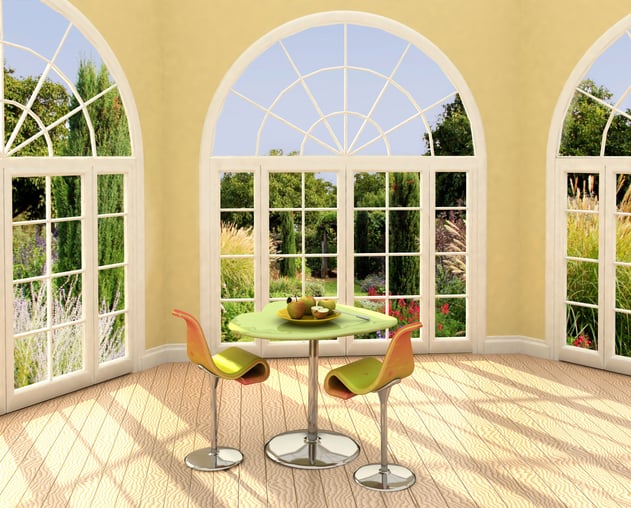
If you live in a hurricane-prone area, you have some special considerations when it comes to the windows you install in your home. The type you choose may decrease the amount you pay on your homeowner's insurance for years to come. It also may increase the energy efficiency of your home, so it's important to understand all the window ratings and how they apply to you.
Lower is better…
U-Factor
The U-factor is the measure of how well the window keeps heat from escaping the building. Typical ratings are between 0.15 and 1.20, and the lower the rating the better. This rating is important in both cold and warm climates when it comes to saving money on heating and/or air conditioning bills.
Solar Heat Gain Coefficient
As opposed to the U-factor, the SHGC measures the extent to which the heat is blocked in the first place. The window sticker will be labeled in this area with a number between 0 and 1, and again, the lower the number, the more efficient the window is at blocking heat. This number should be as low as you can afford if you live in a hot climate like Florida or Texas, but in colder climates you may want a higher number to decrease the cost of heating your home.
Visible Transmittance
Again a number between 0 and 1, visible transmittance is how much light comes through the window. The higher the VT, the more light. This may be a significant factor for people whose homes face East or West, don't have much in the surrounding area to block excess light or who want to have more control over the brightness of one or more rooms in their home.
Air Leakage
Air leakage is an optional rating, so you may not find it on all windows. If you do, it will be a number between 1 and 3, with a lower number being better. Air leakage can cost you a lot of money. If air leakage prevention is important, you'll want to look for Energy Star-certified windows.
Except when it’s not…
Condensation Resistance
Another optional rating, this one, expressed as a number between 1 and 100, is actually better if the number is higher. It measures the degree to which a window is able to resist condensation buildup.
For more help in choosing the right windows for your home:


